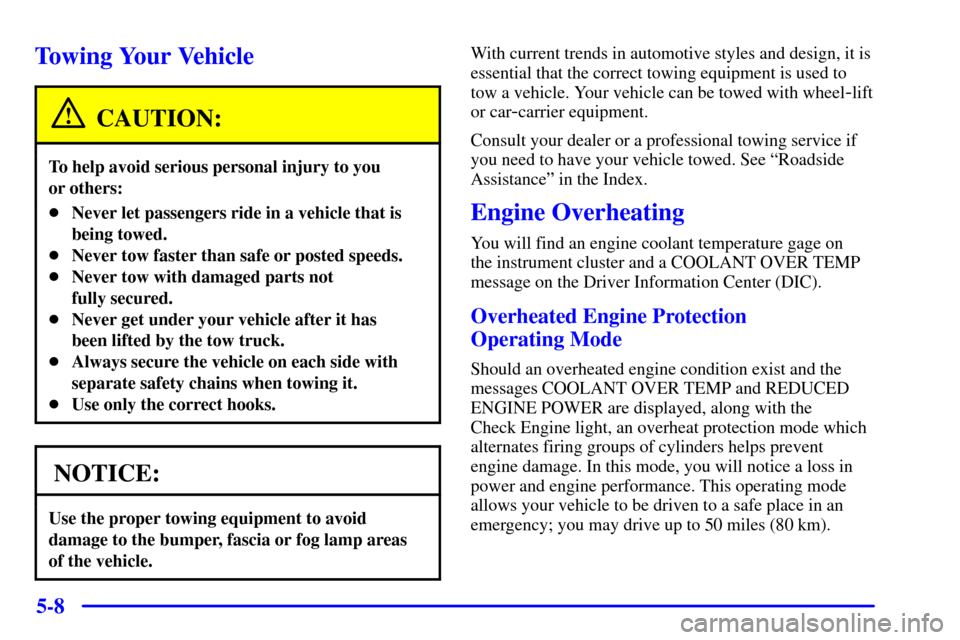Page 175 of 361

3-9
Operating the system in the recirculation mode may
cause fogging of the vehicle's windows when the
weather is cold and damp. To clear the fog, switch the
system to either the DEFOG or DEFROST mode and
increase the fan speed. To avoid re
-fogging of the
windows, operate the system in the OUTSIDE
AIR mode.
FRONT: Press the FRONT defrost button to
quickly remove fog or frost from the windshield. This
setting directs most of the airflow to the windshield and
a small amount toward the lower and side window
outlets. The light on the button will come on and the
digital display will show the defrost mode symbol and
fan speed when the front defrost mode is being used.
Pressing FRONT defrost again will return the system to
the last operating mode and the air intake mode will be
in FRESH AIR.
If the system is in FRONT defrost when you shut the
engine off, it will restart in FRONT defrost unless the
engine is off for longer than 40 minutes. If the engine is
off longer than 40 minutes, the system will restart in the
operating mode you had set prior to FRONT defrost and
the air intake mode will be in FRESH AIR.
See ªRear Window Defoggerº later in this section for
more information.
Sensors
The automatic electronic dual climate control system
uses several sensors to control operation and
display information.
Solar Load Sensor
This sensor is located on the top right side of the
defroster grille. The defroster grille is on the top of the
instrument panel.
The sensor monitors the sun's solar radiation and uses
this information as part of the automatic climate control
system when operating in the AUTO mode.
Be careful not to put anything over the sensor. When
covered, the sensor cannot compensate for changes in
the amount of heat the vehicle is absorbing from the sun.
Outside Air Temperature Sensor
This sensor is located in the air intake under the front
bumper of the vehicle. Information from this sensor is
used for the outside air temperature readings shown
on the digital display for the automatic climate
control system.
Page 177 of 361

3-11 Heating
The heater works best if you keep the windows closed.
Maximum heating will occur when airflow direction is
in the lower mode and the temperature control knob
(on a manual climate control system) is all the way in
the red area. These settings will be selected by the
automatic electronic dual climate control system if
operating in AUTO when maximum heating is required.
The BI
-LEVEL setting is designed for use on sunny
days when the air is only moderately warm or cool.
On days like these, the sun may adequately warm your
upper body, but your lower body may not be warm
enough. The BI
-LEVEL setting will direct cooler
airflow to your upper body and warmer air to the
floor area.
If you have the optional engine coolant heater and use it
during cold weather 0�F (
-18�C) or lower, the
heating system will provide heat more quickly because
the coolant is already warmed. See ªEngine Coolant
Heaterº in the Index.
Defogging and Defrosting
To rapidly defrost the windshield, the FRONT defrost
mode (automatic electronic dual climate control system)
or defrost mode (manual control system) should be used
and the fan speed should be adjusted to the highest
speed. With the manual control system, turn the
temperature control knob all the way to the red area.
To keep the windshield clear and provide heated air to
the floor area of the vehicle, use the DEFOG setting.
Your vehicle is equipped with side window defogger
vents located near the side rearview mirrors.
Rear Window Defogger
REAR: This button turns the rear defogger and
the heated outside mirrors on. The light on the button
will come on when operating. The system automatically
shuts off after approximately 15 minutes. If further
defogging is desired, press the button again and it will
operate for about seven and a half more minutes.
The rear window defogger operates only when the
engine is running.
Page 239 of 361

5-8
Towing Your Vehicle
CAUTION:
To help avoid serious personal injury to you
or others:
�Never let passengers ride in a vehicle that is
being towed.
�Never tow faster than safe or posted speeds.
�Never tow with damaged parts not
fully secured.
�Never get under your vehicle after it has
been lifted by the tow truck.
�Always secure the vehicle on each side with
separate safety chains when towing it.
�Use only the correct hooks.
NOTICE:
Use the proper towing equipment to avoid
damage to the bumper, fascia or fog lamp areas
of the vehicle.
With current trends in automotive styles and design, it is
essential that the correct towing equipment is used to
tow a vehicle. Your vehicle can be towed with wheel
-lift
or car
-carrier equipment.
Consult your dealer or a professional towing service if
you need to have your vehicle towed. See ªRoadside
Assistanceº in the Index.
Engine Overheating
You will find an engine coolant temperature gage on
the instrument cluster and a COOLANT OVER TEMP
message on the Driver Information Center (DIC).
Overheated Engine Protection
Operating Mode
Should an overheated engine condition exist and the
messages COOLANT OVER TEMP and REDUCED
ENGINE POWER are displayed, along with the
Check Engine light, an overheat protection mode which
alternates firing groups of cylinders helps prevent
engine damage. In this mode, you will notice a loss in
power and engine performance. This operating mode
allows your vehicle to be driven to a safe place in an
emergency; you may drive up to 50 miles (80 km).